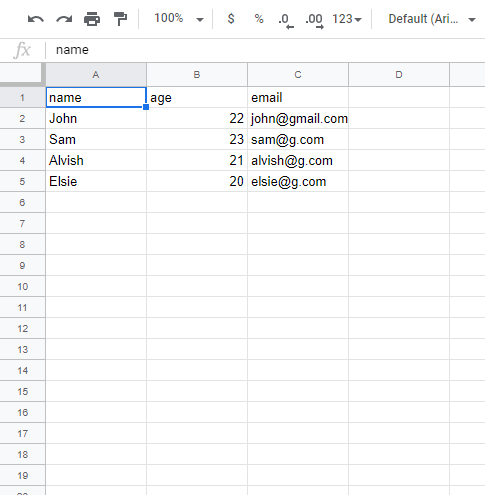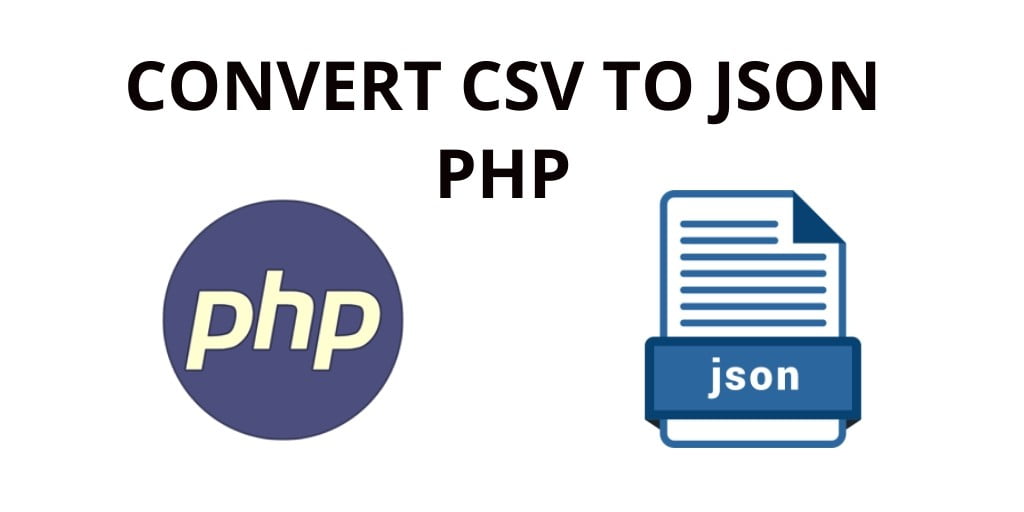CSV (Comma Separated Values) and JSON (JavaScript Object Notation) are two commonly used data formats. CSV is used for storing data in a tabular format where each row represents a record, and each column represents a field. JSON, on the other hand, is a lightweight data-interchange format that is used to represent data as a collection of key-value pairs.
Convert CSV file to JSON in PHP. In this tutorial, you will learn how to convert CSV data or file into a JSON object in PHP.
You should also read the following PHP JSON post:
- PHP JSON Decode Example
- Convert Array To JSON, Object To JSON
- Get, Write, Read, Load, JSON File from Url PHP
Sometimes it may be necessary to convert data from CSV format to JSON format. In this guide, we will discuss how to convert CSV to JSON using PHP.
Convert CSV to JSON File using PHP
By using the following steps, you can convert CSV (Comma Separated Values) to JSON (JavaScript Object Notation) in PHP, follow these steps:
- Step 1: Create a CSV File
- Step 2: Read the CSV File
- Step 3: Convert CSV File to JSON File
- Step 4: Write Data in JSON file
Step 1: Create a CSV File
Let you have one CSV file and its URL https://docs.google.com/spreadsheets/d/e/2PACX-1vTEKCTdbMgSEt7UCymQ956PIYsHei51gpCtPou4VGugKRztJVuZSNuDXKDrdDiZxx6-Ebepte8P6OlG/pub?output=csv. It contains the name, age, email id.
This file looks like below:

Save this file as “abcFile.csv” in the same directory as your PHP script.
Step 2: Read the CSV File
Then, you need to read csv file data. So, You can use the built-in PHP function “fopen” to open the file and “fgetcsv” to read data from the CSV file.
Example:
$fp = fopen('abcFile.csv', 'r');
$headers = fgetcsv($fp); // Get column headers
$data = array();
while (($row = fgetcsv($fp))) {
$data[] = array_combine($headers, $row);
}
fclose($fp);
print_r($data);
Explanation:
- First open the CSV file using the
fopen()function with the mode set to'r'(read). - To read the first row of the CSV file as the header using the
fgetcsv()function. - To initialize an empty array to hold the data.
- Then loop through the remaining rows of the CSV file using a
whileloop and add each row to the data array using thearray_combine()function to combine the header row with the current row. - Close the CSV file using the
fclose()function.
Step 3: Convert CSV File to JSON File
Once you have read CSV data file in php code, now you need to convert it to json data or PHP array. So, you can use the built-in PHP function “json_encode” converts it to JSON format.
// convert array to json php using the json_encode() $arrayToJson = json_encode($newArray); // print converted csv value to json echo $arrayToJson;
In the above given php code, the “$data” array is passed to “json_encode” function with the option “JSON_PRETTY_PRINT” to format the JSON output with indentation and line breaks.
Step 4: Write Data in JSON file
In the final step, you need to write into json file. So for that, you can use the “file_put_contents” function.
$output_filename = 'data.json'; file_put_contents($output_filename, $json);
In the above code, we pass the “$output_filename” and “$json” to the “file_put_contents” function, which writes the data to the file.
Here is the complete code to convert CSV file to JSON file using PHP by writing all the code together:
Example:
<?php
/*
* Converts CSV File to JSON PHP Script
* Example uses Google Spreadsheet CSV
*/
header('Content-type: application/json');
//Set your file path here
$filePath = 'https://docs.google.com/spreadsheets/d/e/2PACX-1vTEKCTdbMgSEt7UCymQ956PIYsHei51gpCtPou4VGugKRztJVuZSNuDXKDrdDiZxx6-Ebepte8P6OlG/pub?output=csv';
// define two arrays for storing values
$keys = array();
$newArray = array();
//PHP Function to convert CSV into array
function convertCsvToArray($file, $delimiter) {
if (($handle = fopen($file, 'r')) !== FALSE) {
$i = 0;
while (($lineArray = fgetcsv($handle, 4000, $delimiter, '"')) !== FALSE) {
for ($j = 0; $j < count($lineArray); $j++) {
$arr[$i][$j] = $lineArray[$j];
}
$i++;
}
fclose($handle);
}
return $arr;
}
// Call the function convert csv To Array
$data = convertCsvToArray($filePath, ',');
// Set number of elements (minus 1 because we shift off the first row)
$count = count($data) - 1;
//First row for label or name
$labels = array_shift($data);
foreach ($labels as $label) {
$keys[] = $label;
}
// assign keys value to ids, we add new parameter id here
$keys[] = 'id';
for ($i = 0; $i < $count; $i++) {
$data[$i][] = $i;
}
// combine both array
for ($j = 0; $j < $count; $j++) {
$d = array_combine($keys, $data[$j]);
$newArray[$j] = $d;
}
// convert array to json php using the json_encode()
$arrayToJson = json_encode($newArray);
// print converted csv value to json
echo $arrayToJson;
?>
Conclusion
In this article, you have learned how to convert CSV files to JSON using PHP.
Recommended PHP Tutorials
- Autocomplete Search Box in PHP MySQL
- Compare Arrays PHP | PHP array_diff() Function
- Get, Write, Read, Load, JSON File from Url PHP
- Functions: Remove First Character From String PHP
- Remove Specific/Special Characters From String In PHP
- How to Replace First and Last Character From String PHP
- Reverse String in PHP
- Array Push, POP PHP | PHP Array Tutorial
- PHP Search Multidimensional Array By key, value and return key
- json_encode()- Convert Array To JSON | Object To JSON PHP
- PHP remove duplicates from multidimensional array
- PHP Remove Duplicate Elements or Values from Array PHP
- Get Highest Value in Multidimensional Array PHP
- PHP Get Min or Minimum Value in Array
- String PHP to Uppercase, Lowercase & First Letter Uppercase
- PHP: isset() vs empty() vs is_null()
- Chunk_split PHP Function Example
- PHP Function: Date and Time With Examples
- Reverse Number in PHP | PHP Tutorial
